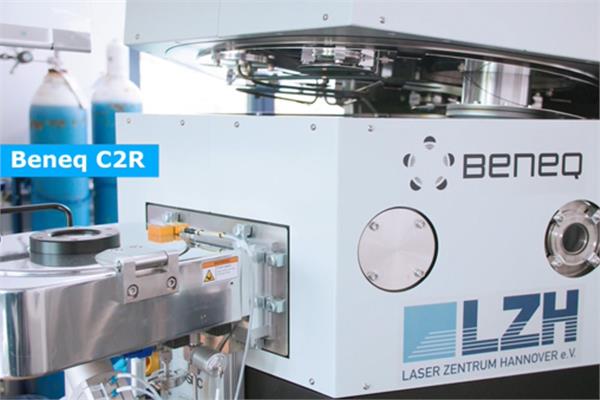
Beneq and Lazer Zentrum Hannover developed a spatial ALD system to coat complex and 3D optics with conformal optical films.
The Laser Zentrum Hannover e.V. – an independent and non-profit research institute dedicated to promoting applied research in the field of photonics and laser technology – and the provider of systems for atomic layer deposition (ALD) Beneq
have recently presented the results of their partnership. Beneq C2R ALD is a spatial ALD system that allows to coat complex and 3D optics with conformal optical films at deposition rates of up to 1 µm/hour.
Emerging optics, such as those used in mobile phone cameras, AR/VR goggles and LiDAR devices, demand antireflective coatings with better conformality than achievable with traditional Physical vapor deposition (PVD) processes. In order to address the new trends, LZH has decided to expand its coating capabilities to include ALD. The company is currently coating optical grating structures and polymer optical lenses for use in virtual and augmented reality glasses.
The new Beneq C2R ALD system can achieve deposition rates 100 times faster than typical ALD processes and is on par with the current PVD state-of-the-art processes, such as the ion beam sputtering (IBS). The speed of the C2R will then allow to make ALD viable for production scale coatings in the optics industry. The self-limiting nature of ALD allows precise control of film thickness and highly conformal coatings on structured, curved and freeform surfaces.
“Spatial ALD with the Beneq C2R addresses the deposition speed and film performance challenges presented by coating next-generation optics. It is poised to help bring high volume manufacturing with ALD to the forefront of the optical coating industry,” has stated Sami Sneck, the vice-president of Advanced ALD at Beneq.
“We were surprised by ALD’s simple adaptation to optical coatings. With classical PVD processes, it’s nearly impossible to achieve a conformal coating on a strongly curved surface with the same reflection or transmission values over the whole area. With ALD, it is so simple and easy to achieve,” has commented Andreas Wienke, the head of the Optical Components Department at LZH.
In addition, LZH recently implemented their own in-situ monitoring tool to improve the C2R’s capabilities. The system allows real-time monitoring of layer growth and the ability to swiftly re-engineer coatings, yielding very precise and reproducible thin films.
“With the new BBM and other additional features, we are raising the bar for what is attainable with ALD in the optical coatings industry,” has concluded Sneck.